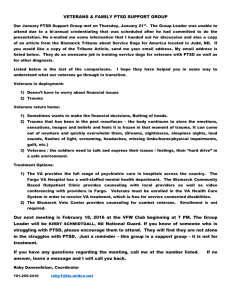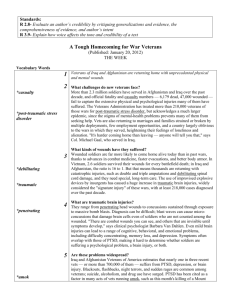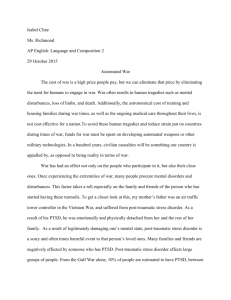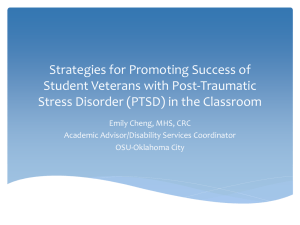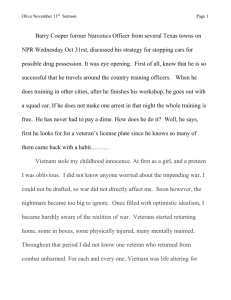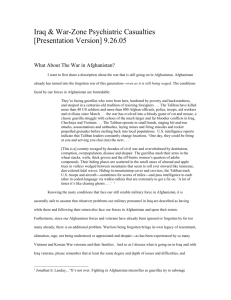Veteran Fact Sheet
advertisement
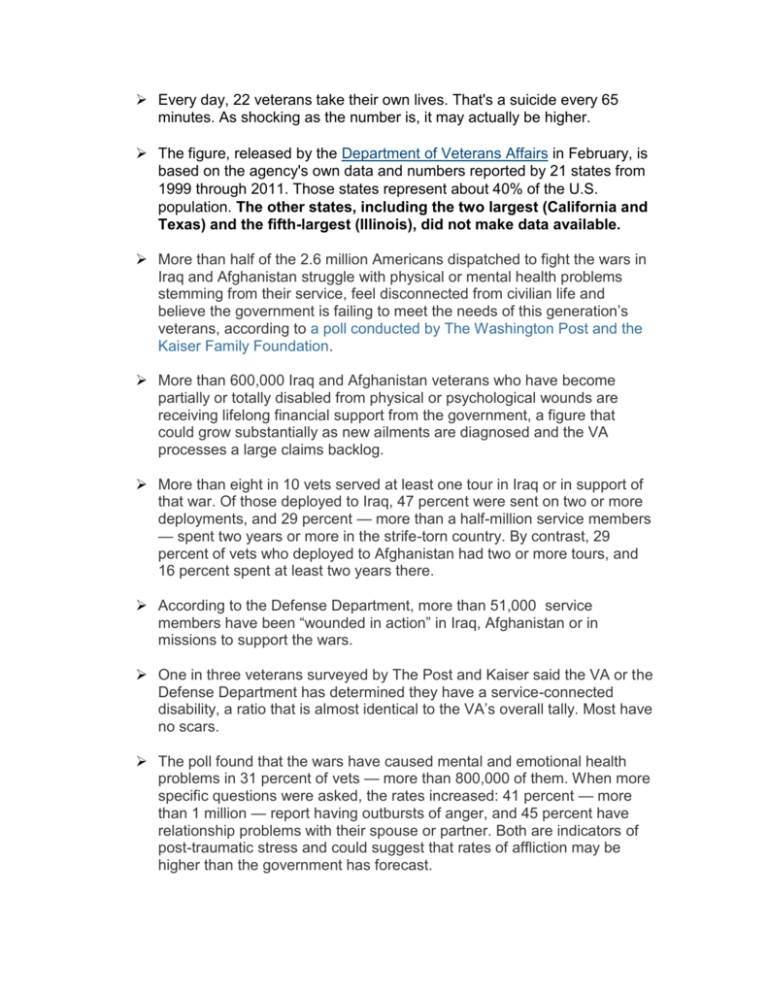
Every day, 22 veterans take their own lives. That's a suicide every 65 minutes. As shocking as the number is, it may actually be higher. The figure, released by the Department of Veterans Affairs in February, is based on the agency's own data and numbers reported by 21 states from 1999 through 2011. Those states represent about 40% of the U.S. population. The other states, including the two largest (California and Texas) and the fifth-largest (Illinois), did not make data available. More than half of the 2.6 million Americans dispatched to fight the wars in Iraq and Afghanistan struggle with physical or mental health problems stemming from their service, feel disconnected from civilian life and believe the government is failing to meet the needs of this generation’s veterans, according to a poll conducted by The Washington Post and the Kaiser Family Foundation. More than 600,000 Iraq and Afghanistan veterans who have become partially or totally disabled from physical or psychological wounds are receiving lifelong financial support from the government, a figure that could grow substantially as new ailments are diagnosed and the VA processes a large claims backlog. More than eight in 10 vets served at least one tour in Iraq or in support of that war. Of those deployed to Iraq, 47 percent were sent on two or more deployments, and 29 percent — more than a half-million service members — spent two years or more in the strife-torn country. By contrast, 29 percent of vets who deployed to Afghanistan had two or more tours, and 16 percent spent at least two years there. According to the Defense Department, more than 51,000 service members have been “wounded in action” in Iraq, Afghanistan or in missions to support the wars. One in three veterans surveyed by The Post and Kaiser said the VA or the Defense Department has determined they have a service-connected disability, a ratio that is almost identical to the VA’s overall tally. Most have no scars. The poll found that the wars have caused mental and emotional health problems in 31 percent of vets — more than 800,000 of them. When more specific questions were asked, the rates increased: 41 percent — more than 1 million — report having outbursts of anger, and 45 percent have relationship problems with their spouse or partner. Both are indicators of post-traumatic stress and could suggest that rates of affliction may be higher than the government has forecast. Although The Post and Kaiser did not ask respondents the full battery of questions typically used to make post-traumatic stress diagnoses, previous studies conducted for the Pentagon, including one by the Rand Corp. in 2008, have estimated rates of post-traumatic stress or major depression at about 20 percent. Time may explain some of the difference: Every service member experiences the stress of war differently, and some do not feel it for years. In a recent VA survey of 1,500 women who deployed to Iraq and Afghanistan, one in four said they experienced sexual assault — defined as any unwanted contact from groping to rape — during their deployments. Summary of Veterans Statistics for PTSD, TBI, Depression and Suicide. There are over 2.3 million American veterans of the Iraq and Afghanistan wars (compared to 2.6 million Vietnam veterans who fought in Vietnam; there are 8.2 million "Vietnam Era Veterans" (personnel who served anywhere during any time of the Vietnam War) At least 20% of Iraq and Afghanistan veterans have PTSD and/or Depression. (Military counselors I have interviewed state that, in their opinion, the percentage of veterans with PTSD is much higher; the number climbs higher when combined with TBI.) Other accepted studies have found a PTSD prevalence of 14%; see a complete review of PTSD prevalence studies, which quotes studies with findings ranging from 4 -17% of Iraq War veterans with post-traumatic stress disorder) 50% of those with PTSD do not seek treatment Out of the half that seek treatment, only half of them get "minimally adequate" treatment (RAND study) 19% of veterans may have traumatic brain injury (TBI) Over 260,000 veterans from OIF and OEF so far have been diagnosed with TBI. Traumatic brain injury is much more common in the general population than previously thought: according to the CDC, over 1,700,000 Americans have a traumatic brain injury each year; in Canada 20% of teens had TBI resulting in hospital admission or that involved over 5 minutes of unconsciousness (VA surgeon reporting in BBC News) 7% of veterans have both post-traumatic stress disorder and traumatic brain injury Rates of post-traumatic stress are greater for these wars than prior conflicts In times of peace, in any given year, about 4% (actually 3.6%) of the general population have PTSD (caused by natural disasters, car accidents, abuse, etc.) Recent statistical studies show that rates of veteran suicide are much higher than previously thought (see suicide prevention page). PTSD distribution between services for OND, OIF, and OEF: Army 67% of cases, Air Force 9%, Navy 11%, and Marines 13%. (Congressional Research Service, Sept. 2010) Recent sample of 600 veterans from Iraq and Afghanistan found: 14% posttraumatic stress disorder; 39% alcohol abuse; 3% drug abuse. Major depression also a problem. "Mental and Physical Health Status and Alcohol and Drug Use Following Return From Deployment to Iraq or Afghanistan." Susan V. Eisen, PhD Oddly, statistics for veteran tobacco use are never reported alongside PTSD statistics, even though increases in rates of smoking are strongly correlated with the stress of deployment and combat, and smoking statistics show that tobacco use is tremendously damaging and costly for soldiers. More active duty personnel die by own hand than combat in 2012 (New York Times)



